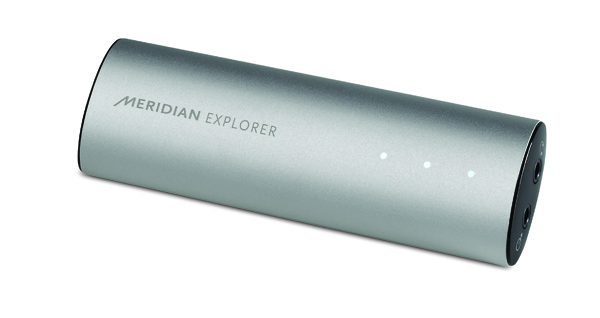

- #Meridian explorer dac driver driver#
- #Meridian explorer dac driver series#
- #Meridian explorer dac driver mac#
Switching between different sample-rates was near instantaneous with no clicks, burps, or other extraneous sounds.

Hooked up directly to a Stax 404 earspeakers driven by a Stax SRM 006-ts amplifier via a one meter pair of Black Cat Neo-Morpheus cable the Director was absolutely dead quiet even when I turned up the Stax amp to 11. While I haven’t spent enough time with the Director to go into great detail about it’s ultimate sonic capabilities, I can confidently report that it can produce a beautiful-sounding results. Using the Director with my Sonos was even easier – all I had to do was connect the Sonos’ digital output to the Director, connect the Director’s power supply and RCA output and I was done.
#Meridian explorer dac driver mac#
Until I selected “USB” my Mac didn’t “recognize” the Director as a USB device, so it didn’t show up in the Audio Midi Set-up panel. The final step was to choose the USB input via the Director’s front panel. First I connected it via a Light Harmonics Lightspeed USB cable, then went to the Audio Midi Setup control panel, where I designated the Explorer as my audio output device and it was up and running, almost.

Installing the Director in my computer audio system was as simple as 1-2. On the Director’s four-layer circuit board you’ll find an XMOS L2 processor for USB interface and DSP functions coupled to a Crystal Semiconductor CS 4353 DAC chip.
#Meridian explorer dac driver series#
Under the hood Meridian has endowed the Director with Meridian’s proprietary upsampling and apodizing algorithms, separate crystal oscillators for 44.1 and 48 kHz sample-rates, a direct-coupled fixed-level output, and the same quality of capacitors and resistors that Meridian uses in their flagship 800 series of components.
#Meridian explorer dac driver driver#
For Windows machines Meridian supplies driver software, the same driver Meridian created for their Explorer DAC. The Director is a fully compliant USB type 2 device that was immediately recognized by my Mac computer. A third power option would be to use the ifi iUSB Power device between a computer and the Director. It can draw power directly via the USB connection when tethered to a computer, or you can use the supplied AC power source.

Users have two options to power the Director. On one end you’ll find the inputs and single pair of RCA outputs, while on the other is the source selector and output indicator lights. The Director is housed in an oval-shaped case that looks like an Explorer that went on a weight-gain regimen. On the left are two source indicators, while the right has three sample-rate indicators. On either side of the button you’ll find small white LEDs. It supports up to 192/24 resolution on either input, and has a single pair of RCA analog outputs.įor controls the Director has a single push-button that lets users choose the input source. With two inputs, one for USB and the other for either RCA SPDIF or Toslink sources, the Director can be the digital decoding center either a computer or disc-based audio system. Priced at $699, the Director offers increased functionality and performance in a similar, albeit larger, form-factor. Meridian’s newest DAC, called the “Director,” expands upon the theme of affordability and performance pioneered by their “Explorer” DAC. Twitter Facebook Email Print LinkedIn Pinterest SMS WhatsApp


 0 kommentar(er)
0 kommentar(er)
